| 1. |
Curing has a strong influence on the properties of hardened concrete; proper curing __________ increase durability, strength, water tightness, abrasion resistance, volume stability, and resistance to freezing and thawing and deicers. |
|
|
Will not |
|
|
Will |
| 2. |
Exposed slab surfaces are especially sensitive to curing as strength development and freeze-thaw resistance of the top surface of a slab can _________ significantly when curing is defective. |
|
|
Be reduced |
|
|
Expand |
| 3. |
When Portland cement is mixed with water, a chemical reaction called hydration takes place. The extent to which this reaction is completed _____________ the strength and durability of the concrete. |
|
|
Will influences |
|
|
Will not influences |
| 4. |
Freshly mixed concrete normally contains more water than is required for hydration of the cement; however, excessive loss of water by evaporation can |
|
|
delay or prevent adequate hydration. |
|
|
Extend the life of concrete |
| 5. |
The surface is particularly susceptible to insufficient hydration because it dries |
|
|
First |
|
|
Last |
| 6. |
If temperatures are favorable, hydration is relatively rapid the first few days after concrete is placed; however, it is important for water __________ in the concrete during this period, that is, for evaporation to be prevented or substantially reduced. |
|
|
To be retained |
|
|
Not to be retained |
| 7. |
With proper curing, concrete becomes stronger, more impermeable, and more resistant to stress, abrasion, and freezing and thawing. The improvement is rapid at early ages but continues more slowly thereafter for an indefinite period.
|
|
|
True |
|
|
False |
| 8. |
Curing should begin ____________ the concrete stiffens enough to prevent marring or erosion of the surface. Burlap sprayed with water is an effective method for moist curing.
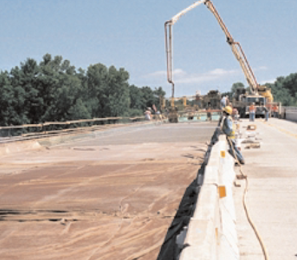
|
|
|
as soon as |
|
|
3 days after |
| 9. |
Fogging __________ moisture loss during and after placing and finishing of concrete.
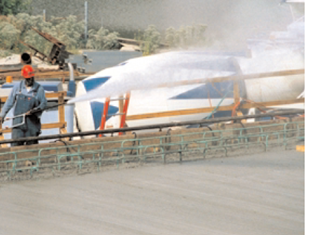
|
|
|
Minimizes |
|
|
Maximizes |
| 10. |
On flat surfaces, such as pavements and floors, concrete can be cured by ponding. Earth or sand dikes around the perimeter of the concrete surface can retain a pond of water. Ponding is an ideal method for preventing loss of moisture from the concrete; it is also effective for maintaining a uniform temperature in the concrete. The curing water __________ more than about 11°C (20°F) cooler than the concrete to prevent thermal stresses that could result in cracking. Since ponding requires considerable labor and supervision, the method is generally used only for small jobs. |
|
|
Should not be |
|
|
Should be |
| 11. |
Polyethylene film is an effective moisture barrier for curing concrete and easily applied to complex as well as simple shapes. To minimize discoloration, the film should be kept ___________ possible on the concrete surface.
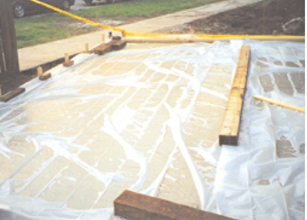
|
|
|
As flat as |
|
|
As wrinkled as |
| 12. |
Liquid membrane-forming curing compounds should be applied with uniform and adequate coverage over the entire surface and edges for effective, extended curing of concrete.
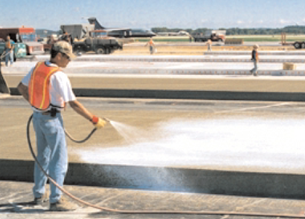
|
|
|
True |
|
|
False |
| 13. |
Layers of dry, porous material such as straw or hay can be used to provide insulation against freezing of concrete when temperatures fall |
|
|
below 0°C (32°F). |
|
|
below 20 C (68 F) |
| 14. |
The period of time that concrete should be protected from freezing, abnormally high temperatures, and against loss of moisture depends upon a number of factors: the type of cementing materials used; mixture proportions; required strength, size and shape of the concrete member; ambient weather; and future exposure conditions. |
|
|
True |
|
|
False |
| 15. |
Penetrating _____________ help protect reinforcing steel in bridge decks from corrosion due to chloride infiltration without reducing surface friction.
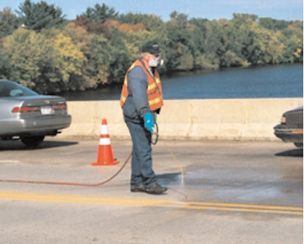
|
|
|
Sealers |
|
|
Curing |
|